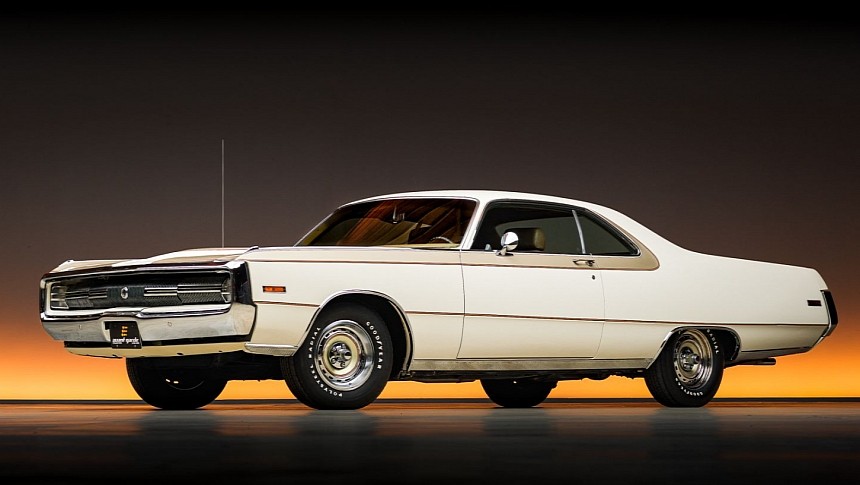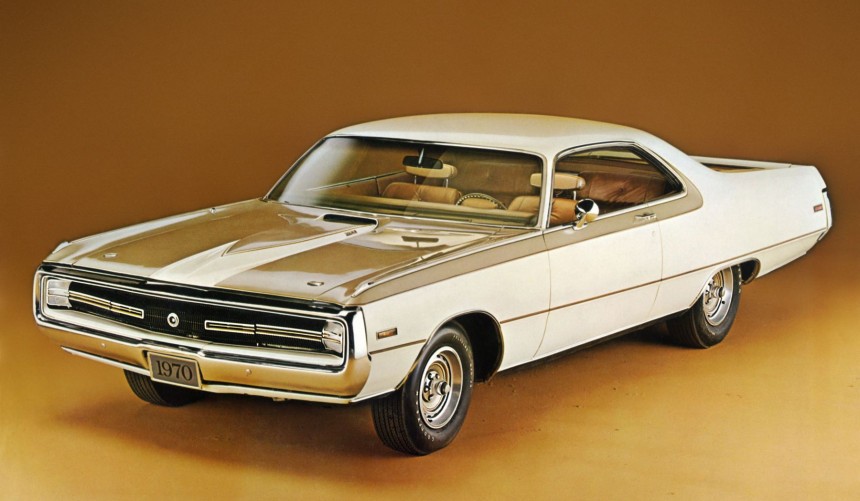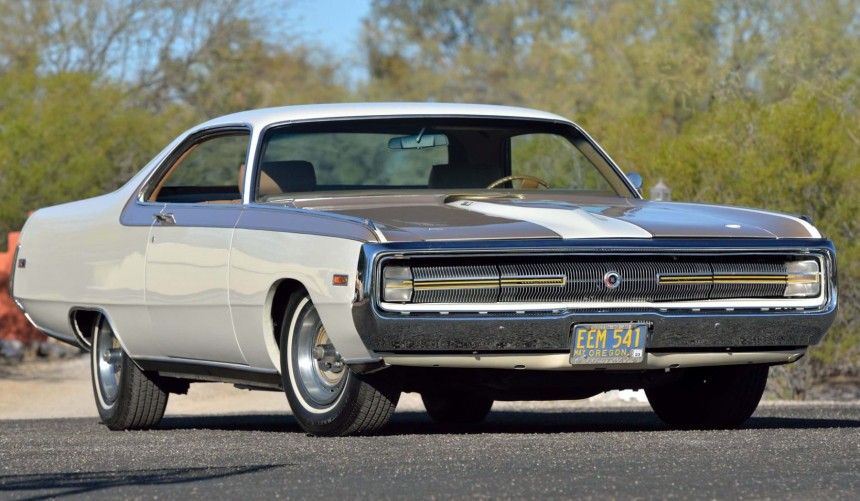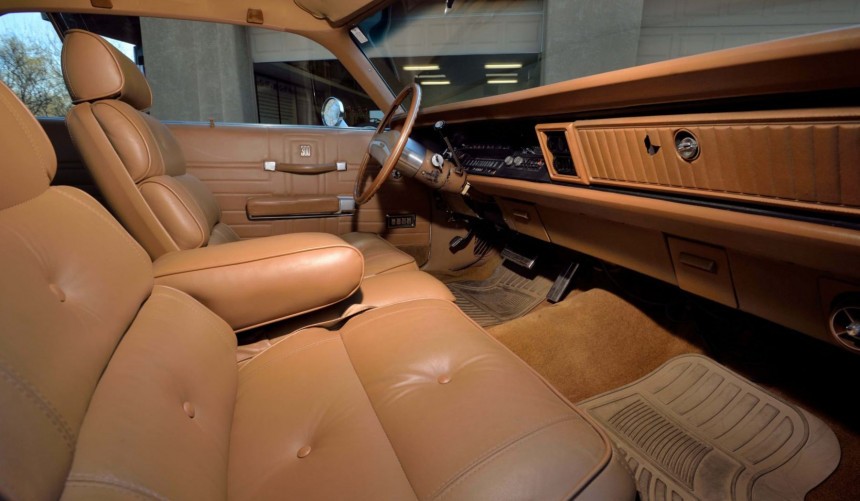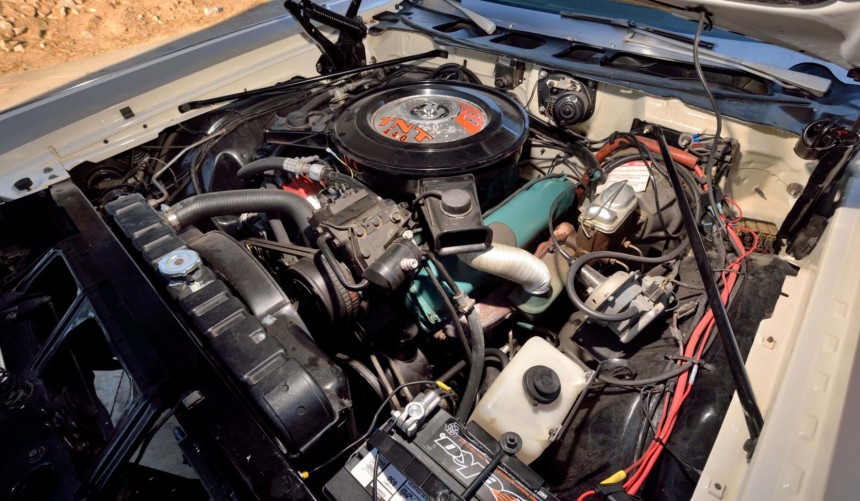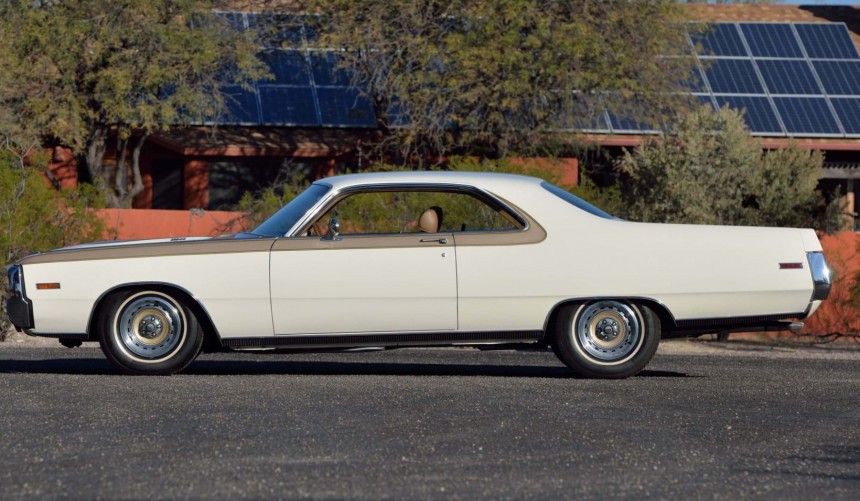As far as humongous, full-size classics equipped with V8 muscle go, the 1970 Chrysler 300 Hurst was the largest ever built.
Today, most people associate the Chrysler 300 with the rather dull modern reincarnation produced since 2005 and dubbed 300C (also Lancia Thema in Europe).
But for knowledgeable enthusiasts, the name hints to the original 1955 C-300, a NASCAR homologation special equipped with a FirePower Hemi V8 rated at 300 hp (hence the model name).
Advertised as America's most powerful production car at the time of its release, the C-300 was the first in a long line of so-called "letter series" 300s two-door coupes and convertibles that pushed the boundaries of luxury and performance with each new iteration until 1965.
In 1962, Chrysler introduced a companion model dubbed 300, giving birth to the "non-letter series."
Available in four-door sedan guise (in addition to two-door coupe and convertibles), the 300 combined muscle car-level performance with luxurious and spacious full-size bodies - all in a more affordable package.
Out of the three iterations of the non-letter series produced until 1971, the coolest, most muscular was the limited-edition 300 Hurst.
By 1969, large-displacement, high-horsepower V8s were being stuffed in the engine bay of nearly all American passenger cars, big or small.
While the Chrysler Corporation was cashing in on this trend with its 426 HEMI- and 440 Magnum/Super Commando-powered intermediates and pony cars, it also wanted to draw more attention to the 300 series.
To do that, Chrysler partnered with Hurst to produce a limited edition of the land yacht for the 1970 model year.
Hurst, the aftermarket shifter manufacturer, had also capitalized on the muscle car craze, growing into a performance consultant that helped several carmakers develop limited-edition models.
With the 1968 AMC SC/Rambler, 1968-1969 Hurst/Olds editions, and the upcoming 1970 AMC Rebel-based "The Machine" on its resume, the company headed by George Hurst was one of the biggest names in the muscle car game.
Like all the two-door 300s, the Hurst edition, commonly referred to as the 300 H, was an imposing presence - even by 1970s standards.
Sitting on a 124-inch (3,149.6 mm) wheelbase, it was 224.7 (5,707.38 mm) inches long, 79.1 inches (2,009.14) wide, and weighed nearly 4,300 pounds (1,950.4 kg).
It had an enormous hood that could hide a tank engine underneath, a greenhouse larger than my living room, and a deck lid that seemed long enough to land a Cessna on.
The beast received a flashy muscle car treatment, courtesy of a bespoke two-tone paint job that blended Spinnaker White with Satin Tan and gold pinstriping to create the iconic Hurst look.
In addition, a new fiberglass hood adorned with a scoop and secured with a pair of pins was added to shed weight and improve the car's muscular look.
The rear lid, which sat atop a trunk large enough to fit blocks from the Great Pyramid of Giza, was also built from fiberglass and received an integrated spoiler.
Inside, the 300 H abandoned the sporty look for the model line's characteristic luxury amenities, including power windows, power front seats, and standard air conditioning.
Furthermore, in what was a living room-size interior, Chrysler transplanted the giant, executive armchair-style front seats from the Imperial.
The ridiculously large seats, steering wheel rim, center console, backseat, and door panels were all upholstered in Saddle tan leather, while plush carpeting and black trims completed the luxurious look.
The standard 1970 300 was powered by a 350-hp 440-ci (7.2-liter) RB V8 with a single four-barrel carb.
The 300 H also received an RB with the same displacement but of the high-performance variety. Dubbed 440 TNT, the powerplant was the same raised-block 440 Magnum or 440 Super Commando successfully used in Dodge- and Plymouth-badged muscle cars.
The engine was only available with a TorqueFlite 727 three-speed automatic (so no Hurst shifter) that helped send power through the rear wheels via a performance-spec diff with a 3.23 ratio.
Rated at 377 hp and 480 lb-ft (651 Nm) of torque, the TNT was good enough to blast the two-ton land yacht from 0 to 60 mph (97 kph) in 7.1 seconds.
Even more impressive, the enormous 300 H could run the quarter mile in a respectable 15.3 seconds, according to independent tests performed in 1970.
To help tame the added power, the car also received a heavy-duty suspension, which meant beefier rear leaf springs and front torsion bars.
The 300 Hurst was a one-year-only affair for Chrysler. The actual number of units built is subject to some debate, but the generally accepted figure stands at 485.
All but one were two-door hardtop coupes, with the sole exception being a convertible used by Hurst for promotional purposes. Legend has it that another Hurst convertible equipped with a HEMI was also built, but so far, it has yet to surface.
Of the few 300 H cars sold to the public, even fewer have survived in highly original shape. But, despite the model's rarity and awesomeness, its average value rarely exceeds $50,000.
The most recent example to hit the auction block is the one featured in this article. Owned since new by NASCAR Hall of Famer Hershel McGriff and sporting 89,190 miles (143,537 km) on the odometer, it sold for a mere $44,000 at a Mecum auction in March (2023).
For more on this underrated beast, we recommend watching the YouTube video below by OldCarMemories.com.
But for knowledgeable enthusiasts, the name hints to the original 1955 C-300, a NASCAR homologation special equipped with a FirePower Hemi V8 rated at 300 hp (hence the model name).
Advertised as America's most powerful production car at the time of its release, the C-300 was the first in a long line of so-called "letter series" 300s two-door coupes and convertibles that pushed the boundaries of luxury and performance with each new iteration until 1965.
In 1962, Chrysler introduced a companion model dubbed 300, giving birth to the "non-letter series."
Available in four-door sedan guise (in addition to two-door coupe and convertibles), the 300 combined muscle car-level performance with luxurious and spacious full-size bodies - all in a more affordable package.
Out of the three iterations of the non-letter series produced until 1971, the coolest, most muscular was the limited-edition 300 Hurst.
Infusing more muscle into the 300 with help from Hurst
While the Chrysler Corporation was cashing in on this trend with its 426 HEMI- and 440 Magnum/Super Commando-powered intermediates and pony cars, it also wanted to draw more attention to the 300 series.
To do that, Chrysler partnered with Hurst to produce a limited edition of the land yacht for the 1970 model year.
Hurst, the aftermarket shifter manufacturer, had also capitalized on the muscle car craze, growing into a performance consultant that helped several carmakers develop limited-edition models.
With the 1968 AMC SC/Rambler, 1968-1969 Hurst/Olds editions, and the upcoming 1970 AMC Rebel-based "The Machine" on its resume, the company headed by George Hurst was one of the biggest names in the muscle car game.
Starting with a healthy dose of flashiness
Sitting on a 124-inch (3,149.6 mm) wheelbase, it was 224.7 (5,707.38 mm) inches long, 79.1 inches (2,009.14) wide, and weighed nearly 4,300 pounds (1,950.4 kg).
It had an enormous hood that could hide a tank engine underneath, a greenhouse larger than my living room, and a deck lid that seemed long enough to land a Cessna on.
The beast received a flashy muscle car treatment, courtesy of a bespoke two-tone paint job that blended Spinnaker White with Satin Tan and gold pinstriping to create the iconic Hurst look.
In addition, a new fiberglass hood adorned with a scoop and secured with a pair of pins was added to shed weight and improve the car's muscular look.
The rear lid, which sat atop a trunk large enough to fit blocks from the Great Pyramid of Giza, was also built from fiberglass and received an integrated spoiler.
Adding a luxurious interior to the mix
Furthermore, in what was a living room-size interior, Chrysler transplanted the giant, executive armchair-style front seats from the Imperial.
The ridiculously large seats, steering wheel rim, center console, backseat, and door panels were all upholstered in Saddle tan leather, while plush carpeting and black trims completed the luxurious look.
Muscle car power to match the looks
The 300 H also received an RB with the same displacement but of the high-performance variety. Dubbed 440 TNT, the powerplant was the same raised-block 440 Magnum or 440 Super Commando successfully used in Dodge- and Plymouth-badged muscle cars.
The engine was only available with a TorqueFlite 727 three-speed automatic (so no Hurst shifter) that helped send power through the rear wheels via a performance-spec diff with a 3.23 ratio.
Rated at 377 hp and 480 lb-ft (651 Nm) of torque, the TNT was good enough to blast the two-ton land yacht from 0 to 60 mph (97 kph) in 7.1 seconds.
Even more impressive, the enormous 300 H could run the quarter mile in a respectable 15.3 seconds, according to independent tests performed in 1970.
To help tame the added power, the car also received a heavy-duty suspension, which meant beefier rear leaf springs and front torsion bars.
A rare limited-edition that's currently not as expensive as you'd think
All but one were two-door hardtop coupes, with the sole exception being a convertible used by Hurst for promotional purposes. Legend has it that another Hurst convertible equipped with a HEMI was also built, but so far, it has yet to surface.
Of the few 300 H cars sold to the public, even fewer have survived in highly original shape. But, despite the model's rarity and awesomeness, its average value rarely exceeds $50,000.
The most recent example to hit the auction block is the one featured in this article. Owned since new by NASCAR Hall of Famer Hershel McGriff and sporting 89,190 miles (143,537 km) on the odometer, it sold for a mere $44,000 at a Mecum auction in March (2023).
For more on this underrated beast, we recommend watching the YouTube video below by OldCarMemories.com.
